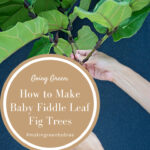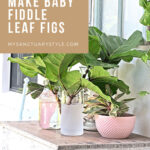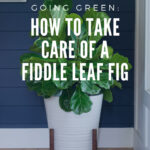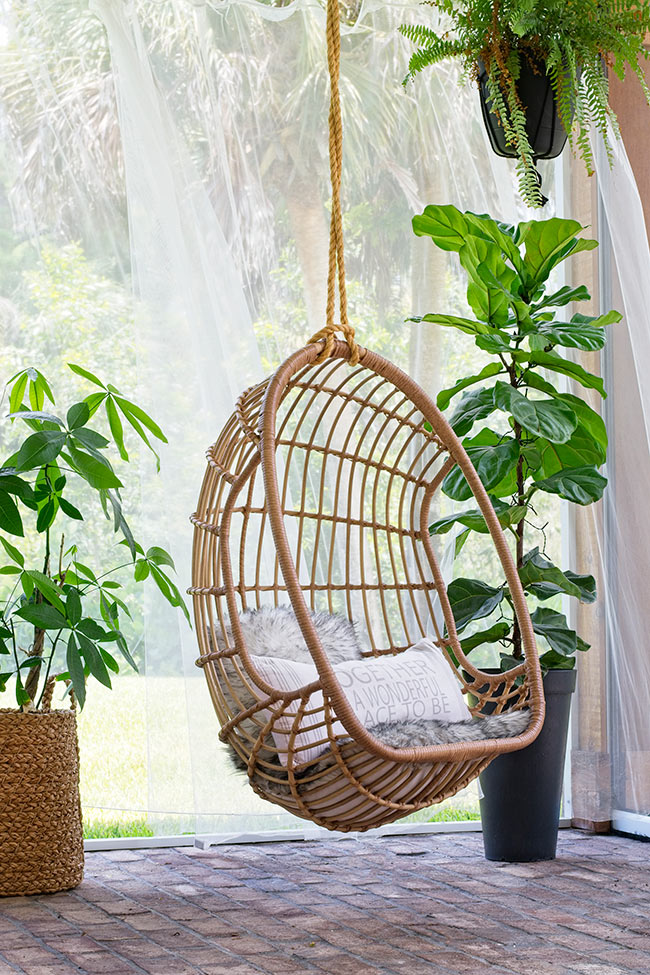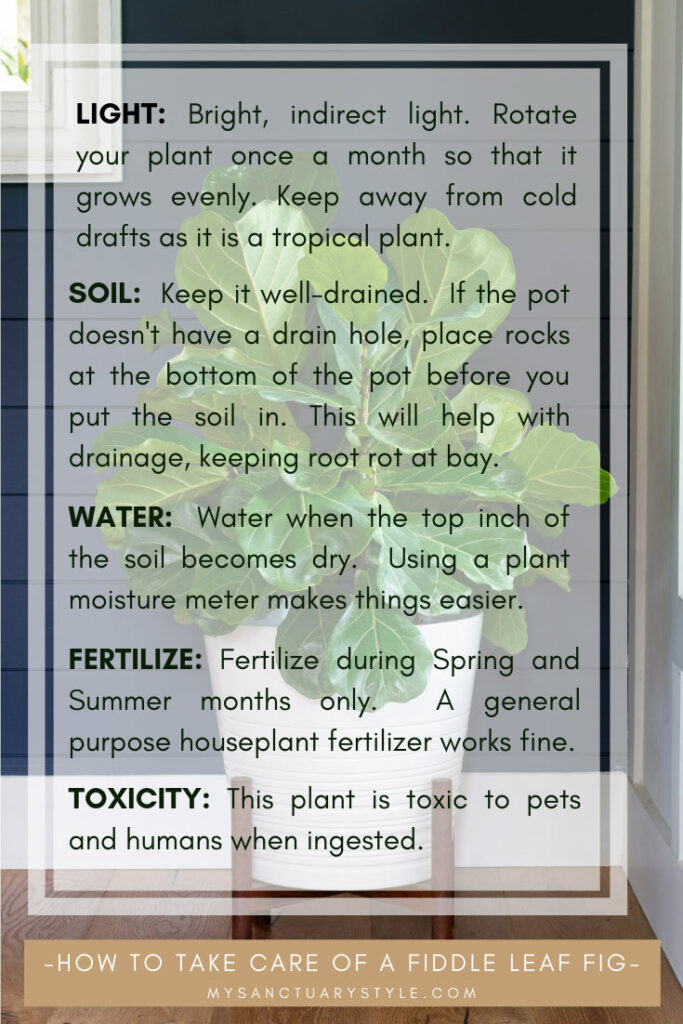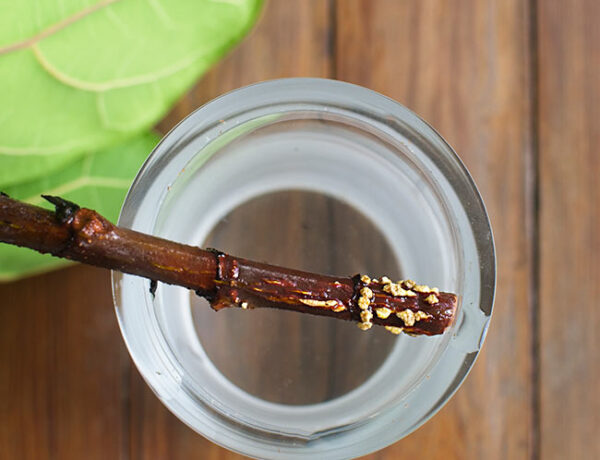For WAY too many years, I wasn’t able to enjoy having houseplants in any of our homes because – CATS. Those little a-holes would try to devour them like it was their job and they were earning extra benefits.
It didn’t matter how high up the plants were placed, the little wackadoos would act like Cirque Du Soleil performers and nimbly jump up on everything just to wreak havoc on their little green victims.
And whenever The Hubs would surprise me with a bouquet of fresh-cut flowers, I’d take my time arranging them juuust right in a pretty vase only to wake up to the horror of discovering my new floral friends freshly decapitated and shredded beyond recognition. RIP.
THE DAY I TURNED INTO A CRAZY-ASS PLANT LADY
When we moved into our farmhouse on Thanksgiving Day 2017, I stood frozen in place, arms raised toward the sky, and loudly declared, “I’M GETTIN’ SOME EFFIN’ HOUSEPLANTS IN THIS MOTHER EFFER!!!” Well, not really, but it sounds SO much better with a little drama thrown in.
Our cats were 15 and 18 at the time, and I didn’t have to worry about them jumping on stuff anymore so I dove right into getting some houseplants. And boy, did I overcompensate for all of those plant-free years – I have at least 50 houseplants!
A lot of people are afraid of trying their hand at raising houseplants, but I want to tell you not to be scared. It’s really not that hard if you just pay just a little attention to their needs.
I learned which plants work best in our home and our climate and I just stick with those species. I’ve had some of my plants for well over 2 years now and I can honestly say they bring me SO much peace and joy and the same can happen for you!
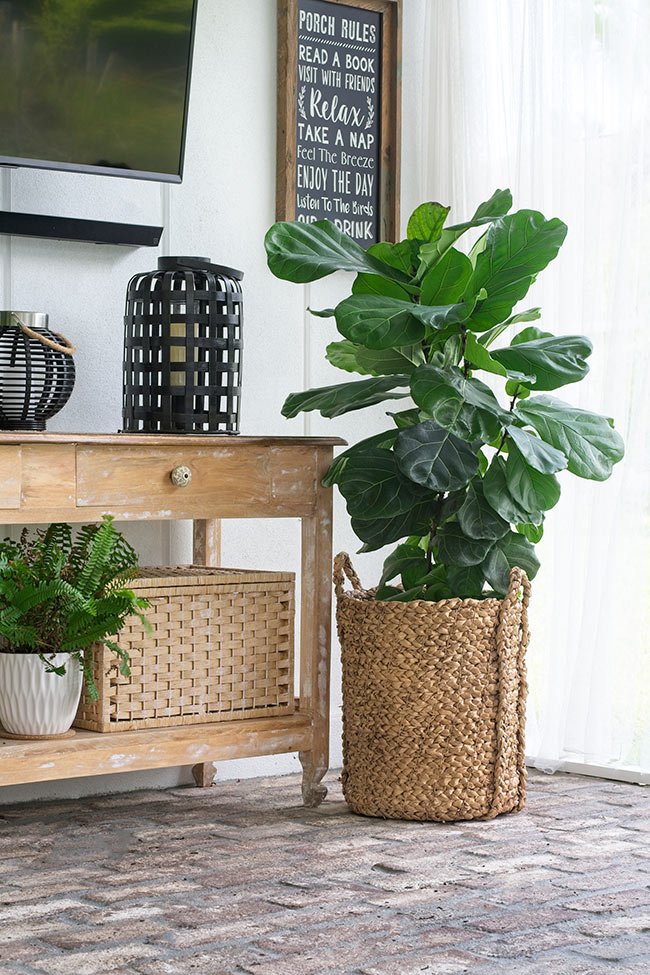
EVERYONE’S FAVORITE: THE FIDDLE LEAF FIG
There’s a reason why the Fiddle Leaf Fig (Ficus lyrata) is a favorite for interior decorators and homeowners alike – it’s just a GORGEOUS specimen with those huge, paper-like dark green leaves.
Lately, however, I keep reading design articles about how the Fiddle Leaf Fig is now “out” and other houseplants are “in.” To those articles’ authors, I say, “EFF. YOU.” There is no way in hell this plant should EVER be on any “out” list. NONE. Sure, there are some other awesome houseplants out there but none that come close to the unique character this plant possesses. This plant is a classic for a reason – it has staying power.
I know that many people seem to believe that these plants are hard to raise, but after owning 10 of these (all still alive) beauties, I can attest to the fact that they are not difficult to take care of. Just follow the recommended instructions of where to place them (and not where to place them), and not overwater them (the #1 killer of houseplants in general), and your plant should live a long time.
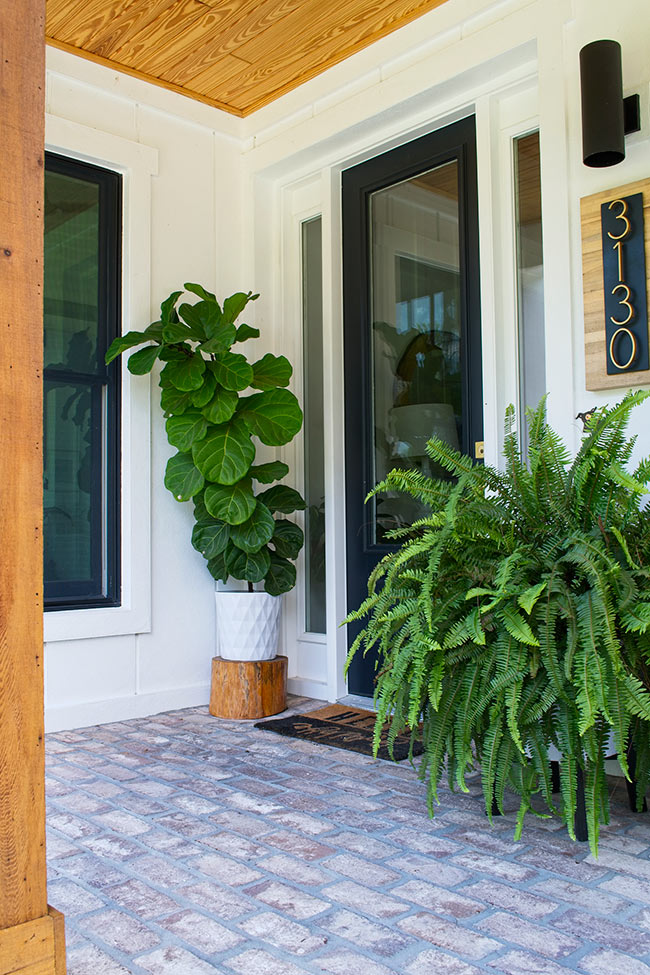
JUST SAY “NO” TO FAUX
I know this can be a polarizing topic: “TO FAUX OR NO?” so I’m just going to give you my 2 cents based upon my own experiences of owning real houseplants for a few years now.
I’m super into nature so I tend to gravitate towards the beauty of real plants. Before I bought my Fiddles, I visited a few stores (online & local) and checked out their faux versions. The one that came closest to looking real was at World Market but it was $180 and I wasn’t about to spend that on one tree. I’d much rather spend $30 and take a chance that I won’t kill it, and my gamble paid off.
If I wanted to have 10 Fiddles as I do now, it would have cost me a cool $1,800 to buy the faux versions. I ended up spending just over $100 for 6 real plants (and made babies from those), saving $1,700!
Real houseplants are also proven to lift your mood, reduce stress levels, and boost productivity and concentration levels, so there are a few more reasons to just say “no” to faux.
Now, if you travel a lot for your job or run an Airbnb and you want houseplants in your home, then it makes sense to invest in the faux versions. However, don’t shy away from going for the real thing because you’re scared of it. Once you own a real Fiddle and it’s thriving under your care, you will become addicted and add more to your collection.
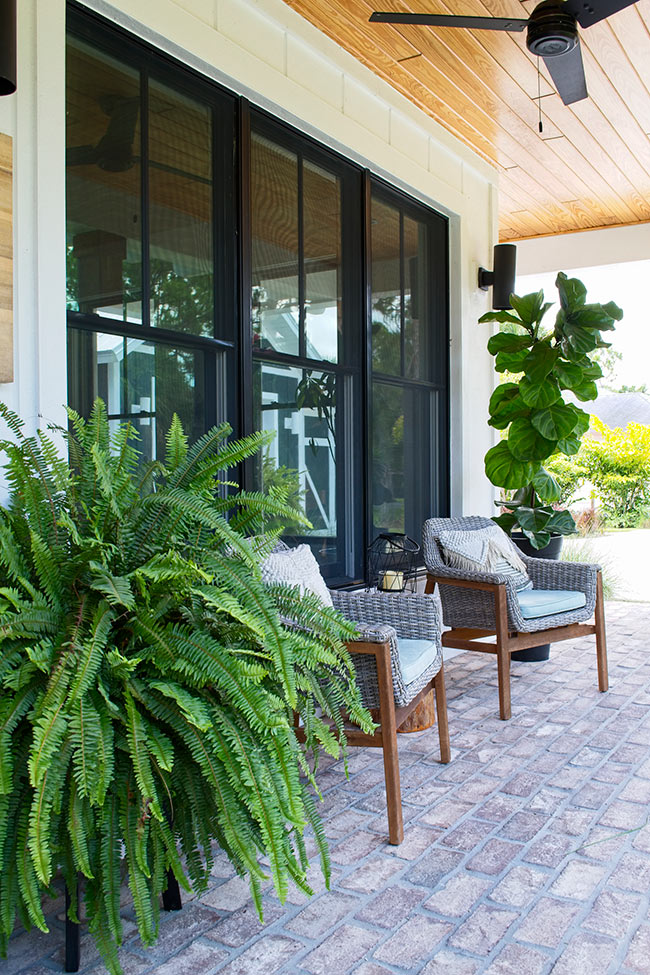
WHERE I BOUGHT MY FIDDLE LEAF FIGS
I bought my first Fiddle Leaf Fig at Home Depot and I believe it was around $30 at that time.
I try to purchase my plants from our local nursery but DANG!, the Fiddles are so expensive there! They were close to $100 for a size just a tad bigger than the ones at Home Depot. Um – HARD PASS, especially for my first Fiddle Leaf Fig.
I purchased the other 5 of my Fiddles at Walmart – they were only $17 (tabletop sizes are only $10) and they are GREAT quality.
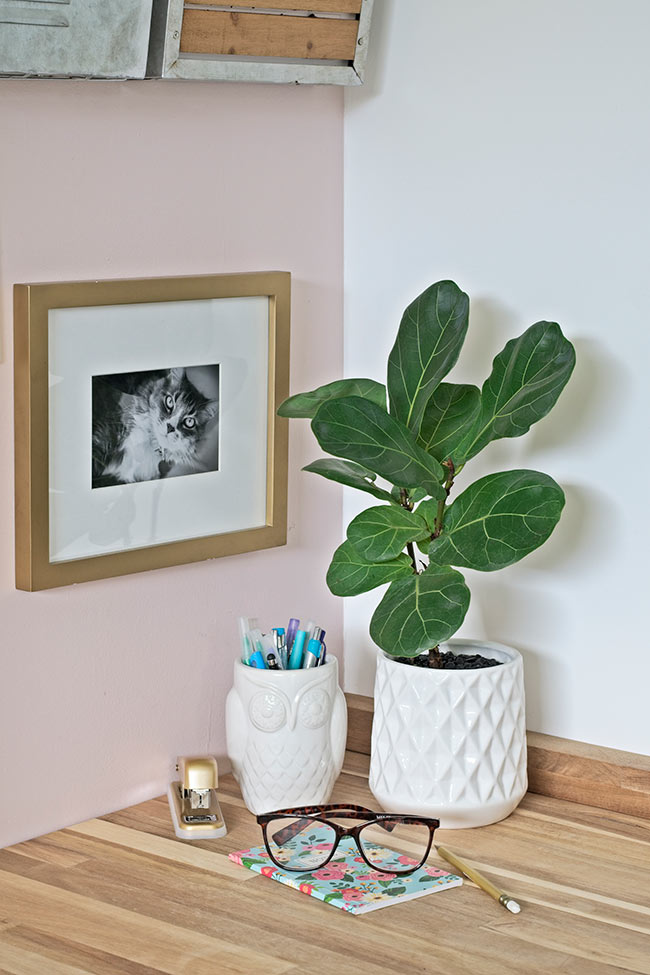
YOU CAN MAKE BABY FIDDLES! SAY WHAAATT?
Yes, you read that correctly: YOU CAN MAKE BABY FIDDLES!!
With this in mind, you really just need to make the initial investment of one Fiddle Leaf Fig and then reap the rewards for years after that.
It’s SUPER easy to propagate (a fancy term for making plant babies), but you will need to have patience because it can take a long time for the roots of a Fiddle clipping to appear. But it’s SO worth the wait because in addition to making them for your own home, they also make great gifts for your friends!
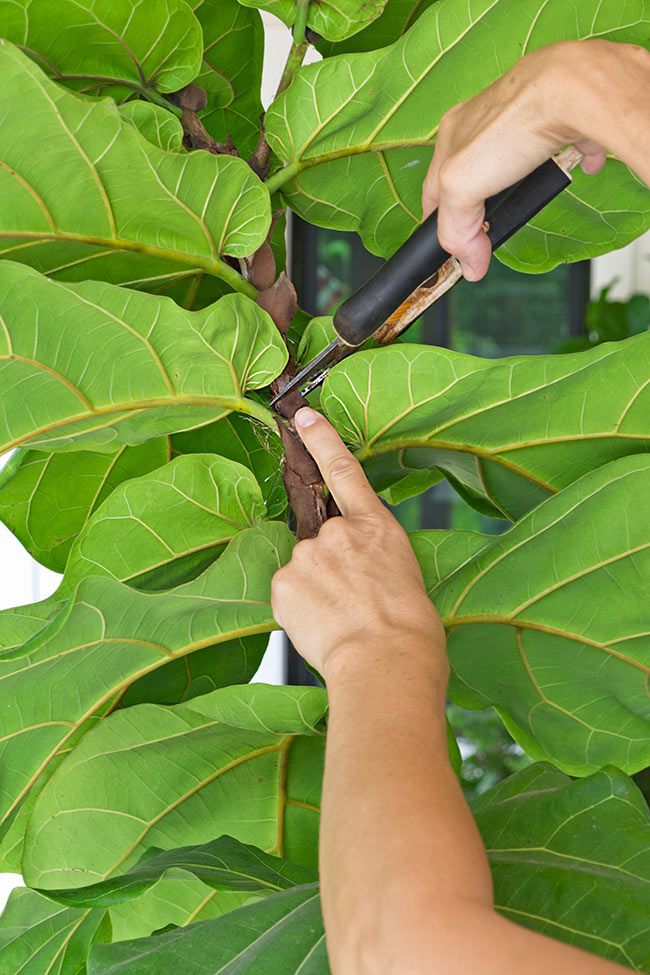
HOW TO MAKE BABY FIDDLE LEAF FIGS
Alright, so let’s dive right into how you make those little green babies. After you do this and you see your baby for the first time, trust me – you will become ADDICTED and will end up having a huge family of Fiddles. Not such a bad thing, really …
STEP 1: You will need to find a node (where the leaf’s stem is connected to the trunk of the Fiddle) and cut right above that as shown in the photo above.
I highly recommend investing in a pair of houseplant pruning shears (this is similar to what I have), or you can use heavy-duty scissors. You’ll probably notice some white goo drip out from the cut stem – that’s normal.
Just make sure to keep your pets and small children away from the goo because it (and the entire plant) is toxic to pets and humans when ingested.
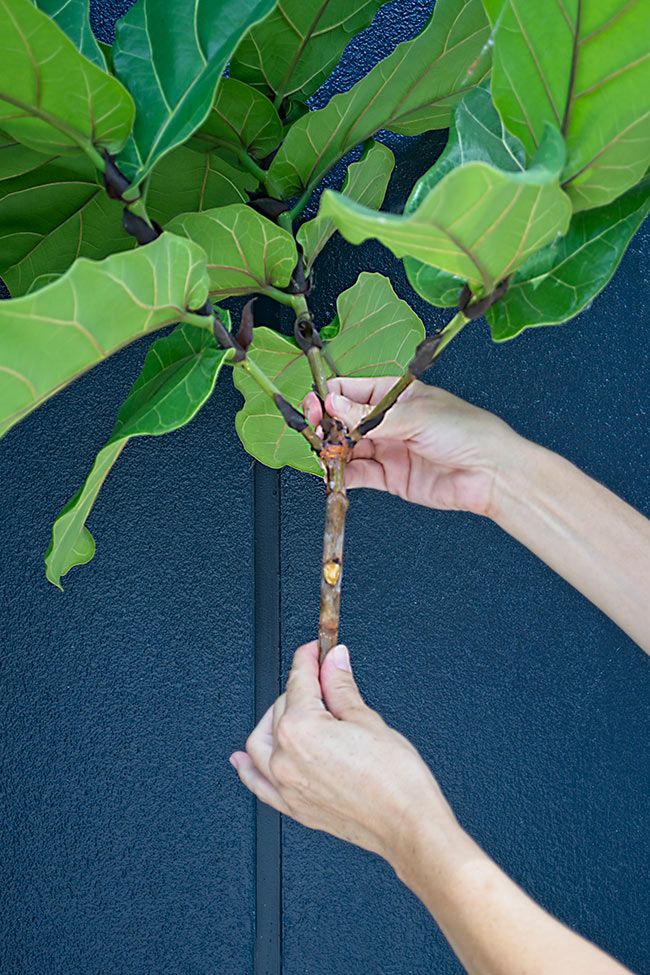
STEP 2: Remove the bottom leaves so you get a nice bare stem as in the photo above. Gently clean any dust and dirt off the leaves with a damp rag or paper towel using lukewarm water.
Side note: Make sure to get into a ritual of wiping down your Fiddle’s leaves with a damp rag or paper towel at least every other month as this will help keep it healthy.
Actually, cleaning leaves is something that applies to all houseplants. Dust tends to accumulate pretty quickly on houseplant leaves, and that accumulation inhibits the photosynthesis process which is how a plant feeds itself.
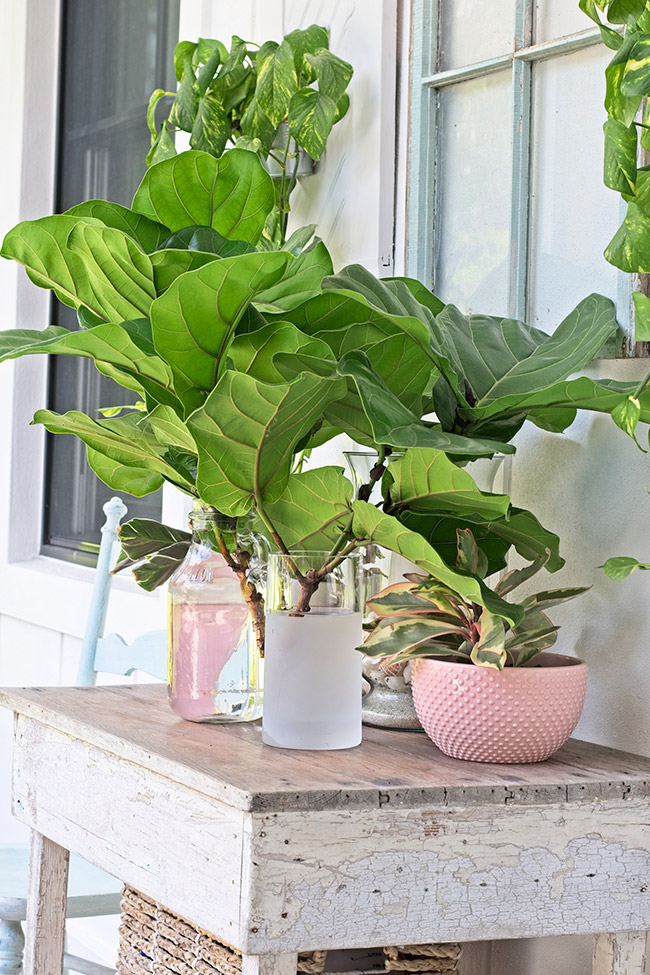
STEP 3: Place the cut plant in a clear glass vase filled with chlorine-free water. If you only have access to tap water, I would recommend spending $1.00 at the grocery store and buy a jug of distilled water to have on hand.
Even though you can place your new cutting into a pot filled with potting soil, I recommend putting the cutting in a glass vase so you can see when the water needs to be changed as well as see when the roots start growing from the cutting.
In my experience, it takes approximately 30 days, give or take, for the roots to sprout from the stem. Once you see the roots, you can plant the cutting in a pot with potting soil. Voila! You just made a Fiddle baby!
Click here to read an update on how my new baby Fiddles from this post are doing.
DOWNLOADABLE FIDDLE
LEAF CARE INSTRUCTIONS
Make sure to check out my Pinterest Houseplants + Planter Pots Decor Ideas board to get some beautiful inspiration for your new houseplant.
Thank you so much for following my blog and for letting me help you create your own lived-in, loved-in spaces!


